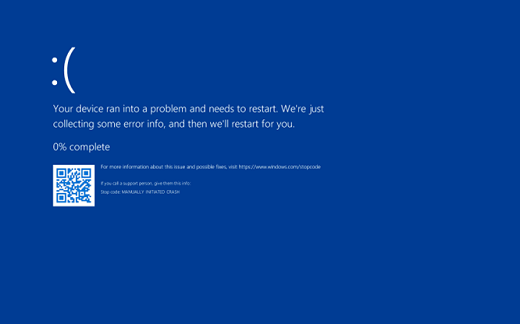Global Microsoft Meltdown Tied to Bad CrowdStrike Update
Introduction
In an unexpected turn of events, a massive Microsoft meltdown was linked to a problematic CrowdStrike update. This incident underscores the critical importance of IT security and the need for meticulous updates. When a routine security update turns into a global IT crisis, it’s a wake-up call for the entire tech industry.
What Happened?
On July 19, 2024, a widespread IT outage disrupted Microsoft systems worldwide. The root cause was traced back to a flawed update from CrowdStrike, a renowned cybersecurity firm. The update, intended to enhance security, inadvertently triggered a series of failures, leading to significant disruptions.
CrowdStrike's Role
CrowdStrike, a leader in cybersecurity solutions, provides protection against cyber threats. However, this time, a seemingly routine update backfired. The update contained a critical error that went unnoticed during testing, resulting in widespread system failures once deployed.
Impact on Microsoft Systems
The meltdown had a far-reaching impact, affecting Microsoft systems across the globe. From individual users to large enterprises, the outage disrupted operations, causing frustration and significant operational losses.
Technical Breakdown
The problematic update exploited a vulnerability in Microsoft systems, leading to cascading failures. This vulnerability allowed the update to interfere with system processes, causing extensive disruptions and making recovery a complex task.
Immediate Response
Both Microsoft and CrowdStrike sprang into action immediately. Microsoft initiated a series of emergency protocols to contain the damage, while CrowdStrike worked tirelessly to identify and rectify the error. Despite their efforts, the scale of the outage made it a challenging situation to manage.
Communication with Users
Communication during the crisis was crucial. Microsoft and CrowdStrike kept users informed through regular updates and advisories. While the transparency was appreciated, the technical jargon sometimes left users confused and concerned.
Recovery Efforts
Recovery from the meltdown was a meticulous process. Microsoft deployed patches and updates to stabilize systems, while CrowdStrike provided additional support to ensure the vulnerability was fully addressed. The recovery timeline spanned several days, with continuous monitoring to prevent further issues.
Lessons Learned
This incident highlighted the importance of thorough testing before deploying updates. Companies must ensure their updates are foolproof to avoid such catastrophic failures. Rigorous testing protocols and contingency plans are essential to mitigate risks.
Future Precautions
To prevent similar incidents, companies should adopt best practices in IT security. This includes comprehensive testing, constant monitoring, and swift response mechanisms. Regular audits and updates can also help identify potential vulnerabilities before they cause problems.
Industry Reactions
The meltdown prompted reactions from across the tech industry. Competitors and collaborators alike expressed concern and provided support. Security experts emphasized the need for improved testing protocols and shared insights on preventing such issues in the future.
User Reactions
Users were significantly affected by the outage, leading to frustration and concern over data security. Feedback from the tech community highlighted the need for better communication and faster resolution during such crises.
Economic Impact
The financial repercussions for Microsoft and CrowdStrike were substantial. Both companies faced significant losses, and the broader economic implications included disrupted business operations and reduced productivity for affected users.
Regulatory Response
Regulatory bodies and government agencies took note of the incident, prompting discussions on potential changes in cybersecurity regulations. The incident could lead to stricter guidelines and oversight to prevent future occurrences.
Solution
Conclusion
The Microsoft meltdown tied to a bad CrowdStrike update serves as a stark reminder of the critical importance of IT security and thorough testing. As the tech industry evolves, so too must our approaches to security and updates. This incident should encourage companies to adopt more rigorous practices to safeguard their systems and users.
FAQs
What caused the Microsoft meltdown? The meltdown was caused by a flawed update from CrowdStrike, which exploited a vulnerability in Microsoft systems, leading to widespread disruptions.
How did CrowdStrike's update lead to the meltdown? The update contained a critical error that interfered with system processes, causing extensive failures and disruptions across Microsoft systems.
What was the impact of the outage? The outage affected Microsoft systems globally, disrupting operations for individual users and large enterprises alike, resulting in significant operational losses.
How can similar incidents be prevented in the future? Preventing similar incidents requires comprehensive testing, constant monitoring, swift response mechanisms, regular audits, and updates to identify and address potential vulnerabilities.
What has been the response from the industry? The tech industry has responded with concern and support, emphasizing the need for improved testing protocols and sharing insights on preventing such issues in the future.



.jpg)








0 Comments